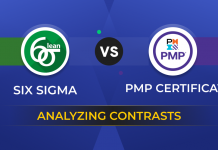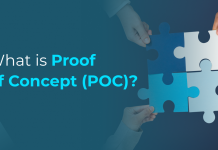
Conflicts are inevitable in organizations where different mindsets endeavor to work together as a team. Though the objective is the same for every member of the team, the methods adopted by each person to reach that objective could be different. Every method would have its own pros and cons, but the very fact that there are different methods themselves leads to conflicts.
Causes of Conflict
1. Different Stakeholder Interests:
Every project will have several stakeholders – customers, vendors, management, project management team, external contractors, government, etc. Differences in interest from the point of view of the stakeholders can be a significant cause of conflicts during a project. The customer wants a never-before-seen product that will transform the way they function. The manufacturing team wants a simple and straightforward product that can be manufactured without complications. The marketing team wants a fancy product with ‘cool’ features which can be marketed to attract customers. Conflicts arise even before the project has begun.
For a project to be successful, it is important that the interests of all these stakeholders are aligned and expectations are set as to what the project will deliver and when and at what cost.
2. Change in Scope:
Change in scope during the progress of a project can cause trouble for the project management team. For example, a new mobile manufacturing company is working on a new model of smartphone. All specifications have been put in place and the design has begun. About 3 months into the project, based on market research, the management decides that the phone will be a Windows-based smartphone instead of an Android-based smartphone. The design team is bound to vehemently disagree with this and there is going to be a conflict between the management and the design team.
3. Project Management Style:
The project management style of the project manager can trigger problems. For instance, a disciplined and process-oriented manager is not going to get along well with a creative team that is creating a TV ad for a telecom brand. Even though there needs to be structure to a project, ad agency professionals need a bit of freedom to let their creative juices flow and come up with innovative ad concepts. There is going to be a conflict between what the project manager wants from the process and how the team wants to do it.
4. Refuted Change Requests:
Having your request declined is going to affect even the most experienced and composed professional. Imagine a scenario where the project manager requests the steering committee for additional resources to meet the changing demands of the customer. The top management fails to look at the specifics of the customer requirements and denies the project manager’s request to provide additional resources in terms of funds and human resources. The project manager is not going to be happy about having to deliver the project with limited resources available at his disposal.
5. Disagreements over Communication Methods:
Communication methods vary in different projects depending upon the size of the organization and the project team. Bigger organizations may use email for formal communications to keep track of records and there would be an in-house chat software which all employees would have access. Whereas, smaller organizations, especially start-ups and SMEs use all available modes of communication – email, SMS, WhatsApp, etc. So, when individuals join a bigger organization, for example, and are put in a project team, they might have a difficult time adapting themselves to the formal modes of communications used in these MNCs. Therefore, when there is a team that is a mix of freshers and experienced professionals or a team that is a mix of individuals who have worked in big corporations and individuals from a start-up or smaller environment, there are bound to be conflicts with regard to the modes of communication. It is best to resolve these differences and decide on a single mode of communication and also ensure that everyone in the team follows that mode.
6. Conflict Resolution:
Conflict does not always have to be a bad thing. Healthy and constructive conflicts are an important feature of high-functioning teams. The team members though need to have mutual respect and maturity to not allow the conflict to escalate into a major dispute. The emotions and perceptions of individuals play a critical role in resolving conflicts.
In spite of this, when a conflict arises, it can be resolved by this simple 3 step process:
7. Prepare to Resolve:
The first and foremost step in resolving a conflict is to be prepared to resolve it. Acknowledge the conflict at hand, discuss the impact on the project and its team members, agree to a process, and agree to communicate with each other.
8. Understand the Situation:
The next step is to understand the cause of the conflict and each team member’s point of view. Clarify the position of the team members who are in conflict, ensure that their concerns are heard and understood, and encourage them to list down their facts, assumptions and beliefs. Why do they think what they think? What led them to believe that? Why do they think that their way is going to benefit the project? Once these questions are answered and the two sides have heard each other, it becomes far easier to reach the middle ground.
Now that individual member concerns have been heard, convene as a team and discuss both points of view, their individual pros, and cons, and how they benefit the project. Summarize the discussion and list both sides’ concerns and ideas so that everyone on the team has a clear idea of what is at stake.
9. Reach an Agreement:
Both parties have now heard each other’s proposals and concerns and they also know how their individual ideas are going to impact the project. Reach an agreement between both parties and ensure they agree to them. If an agreement cannot be reached at that moment, then make a commitment to work towards it in the next few days. If you are able to resolve the conflict, make sure that you as the project manager acknowledge the contributions of the team members, their problems, and their maturity in handling the situation.
Conflict Prevention
As much as healthy conflict is a necessary evil in project management, prevention of conflicts, on the other hand, saves a lot of time and resources for the project manager. Certain skills and behavior, when learned by team members, go a long way in helping prevent conflicts:
- Active listening
- Not letting conflicts become personal
- Mutual respect for individual viewpoints
- Focus on solution
When practiced religiously, these behavioral traits help project teams to avoid most conflicts and work in cohesion to deliver successful projects.
















